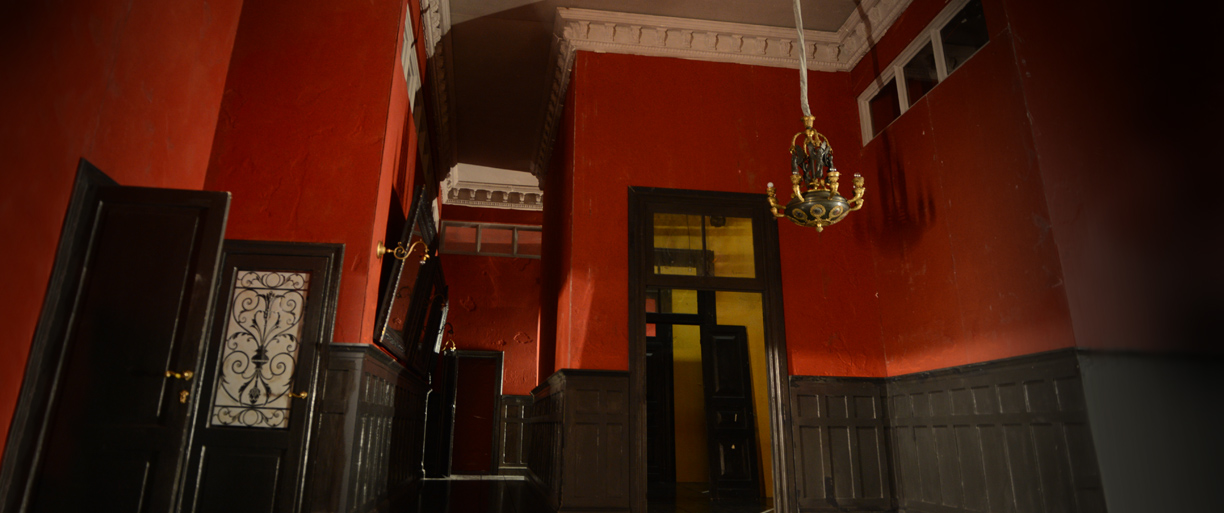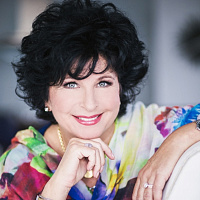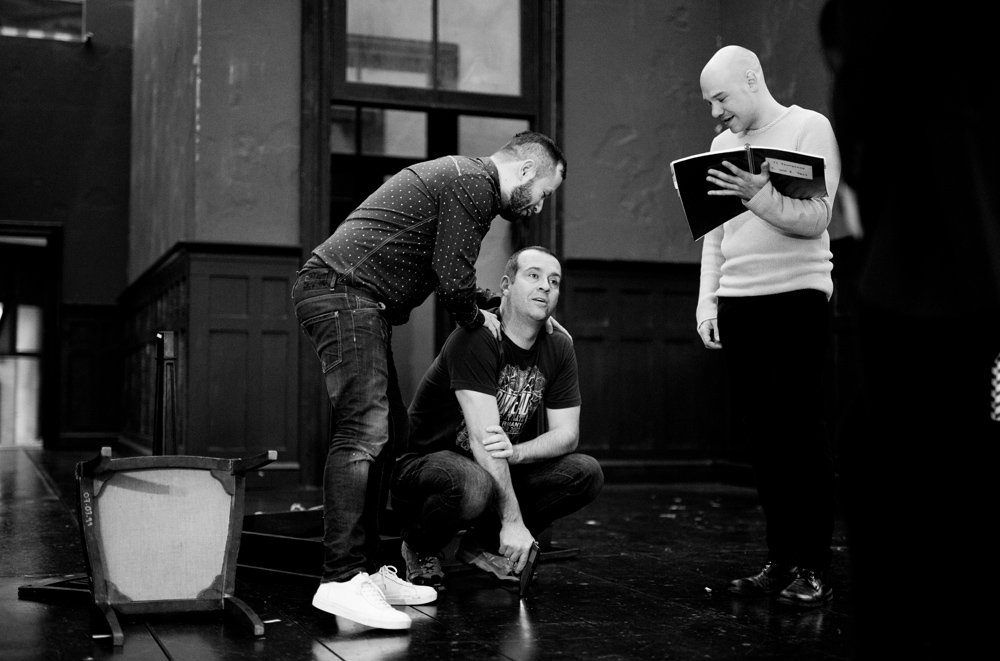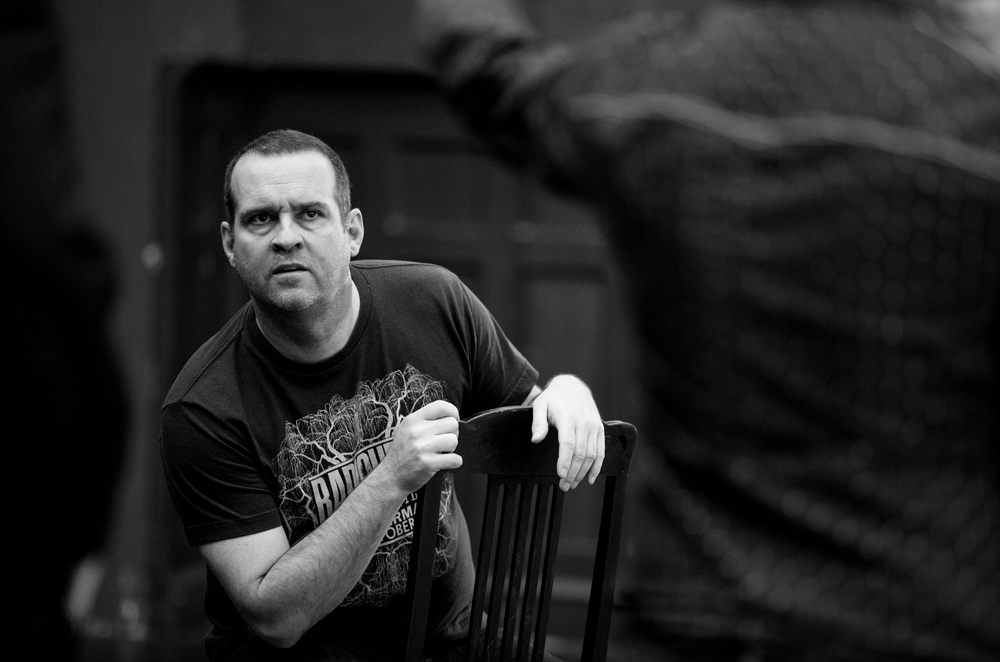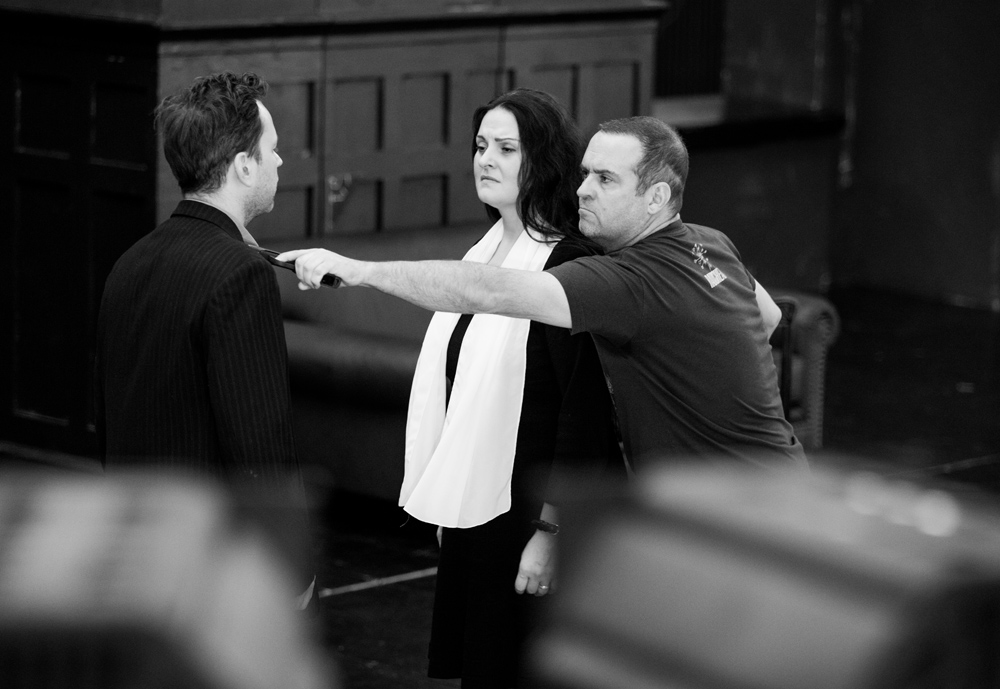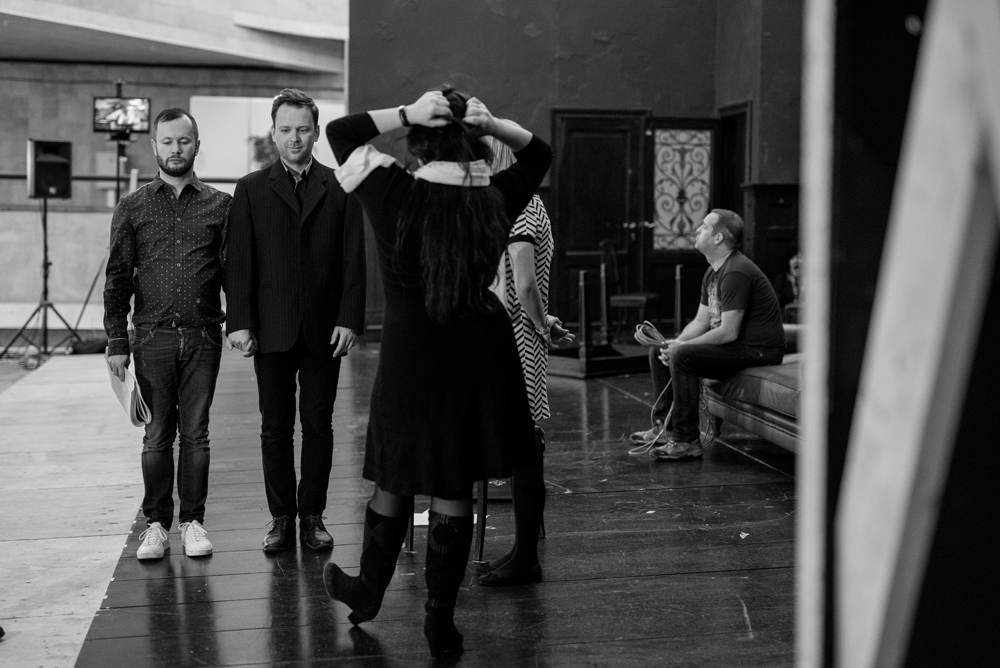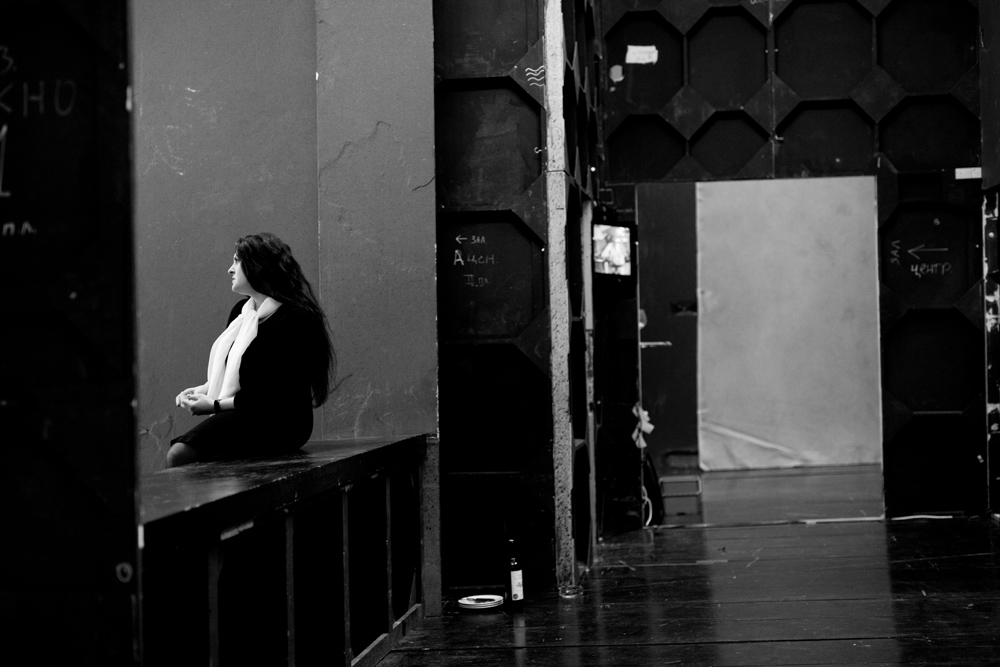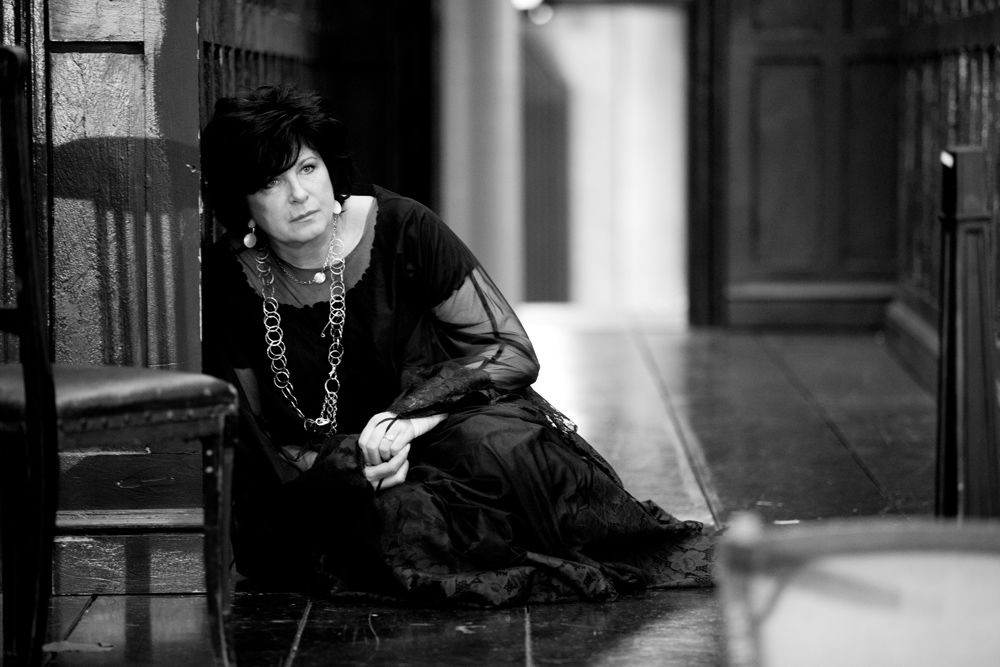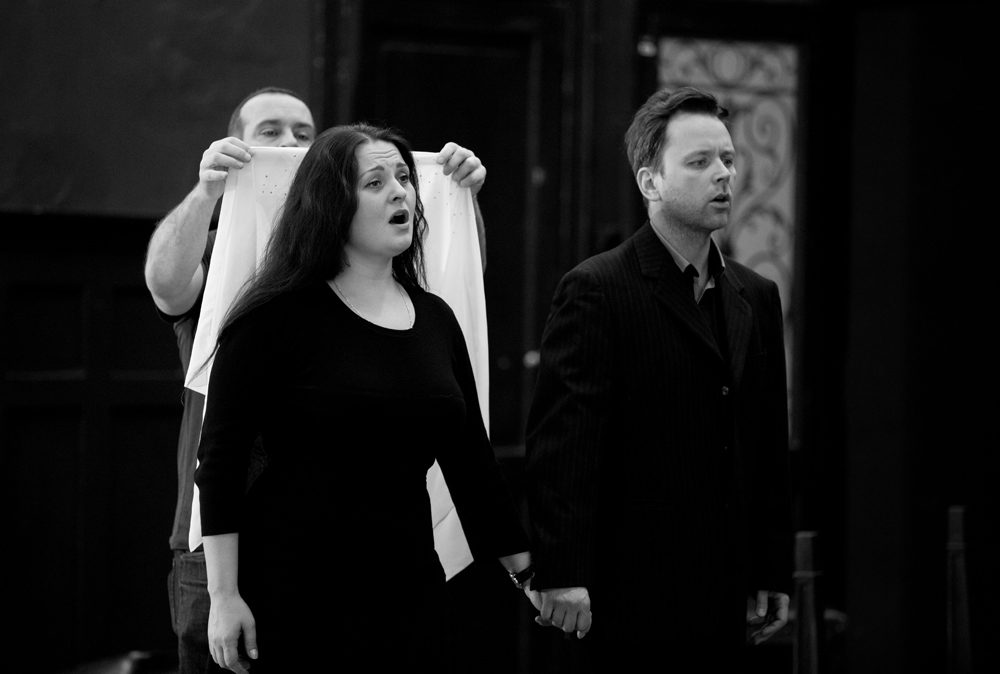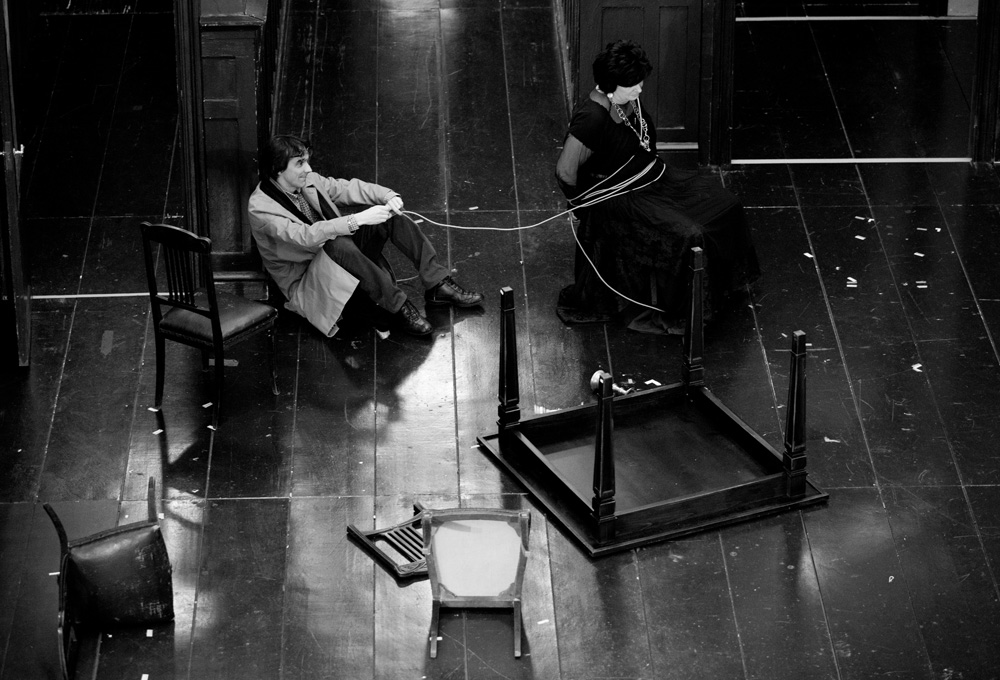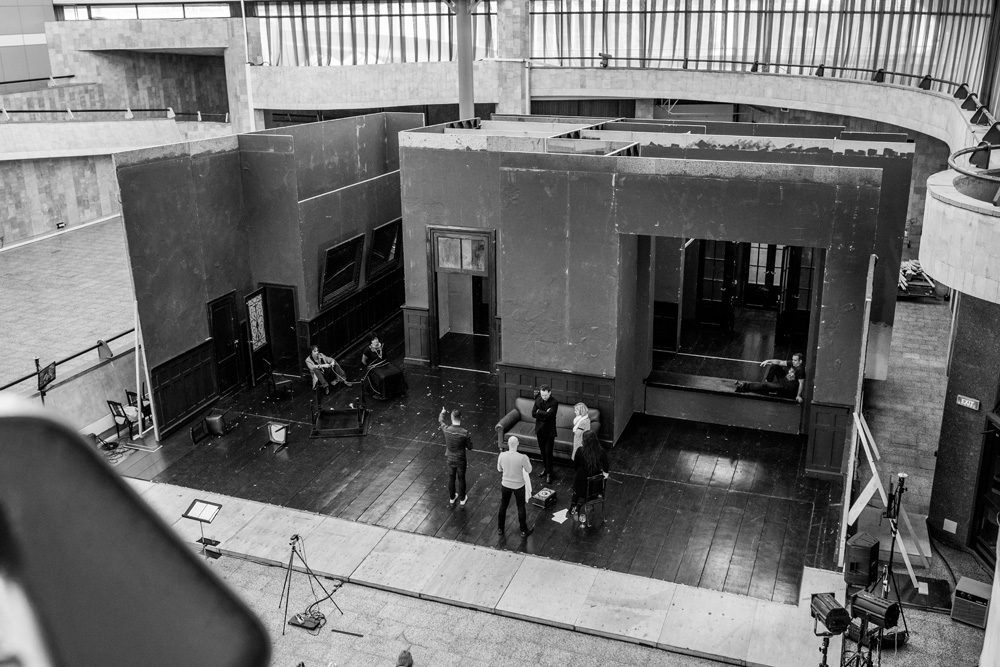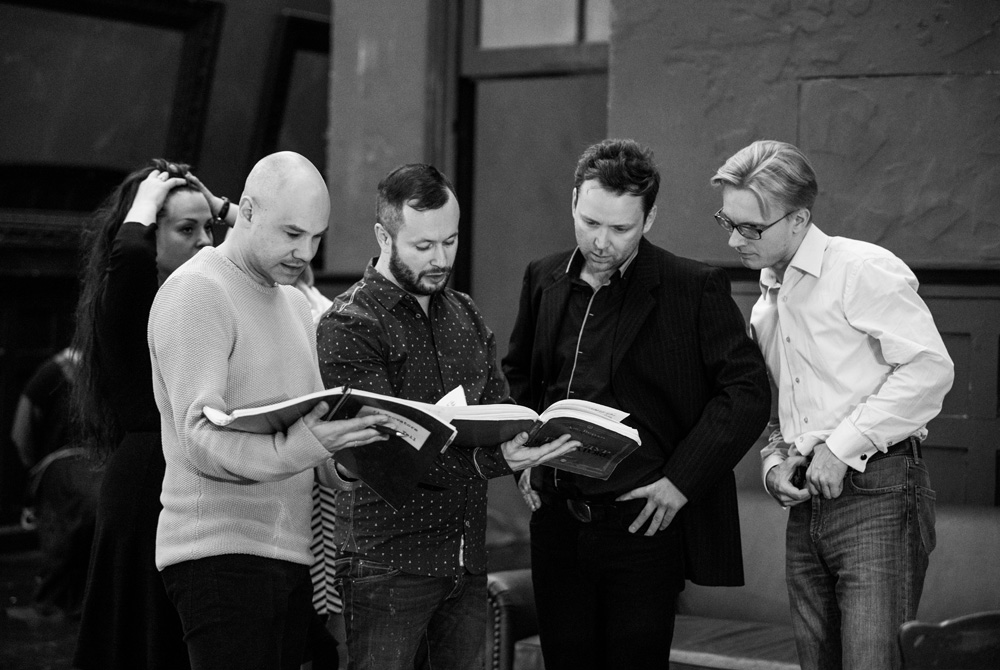Il trovatore
opera in two acts
music by Giuseppe Verdi
 performed in Italian (with Russian surtitles)
performed in Italian (with Russian surtitles)
The production of Théâtre Royal de la Monnaie (2012)
The intricate, medieval plot of the opera, often considered impossible to even retell in a succinct manner, is presented by Dmitri Tcherniakov on a small scale, in an intimate performance. The five characters, connected by their terrible family past, grapple with the secrets that torture them, and attempt to escape their oppressive entrapment. Despite all being victims of events in the distant past, none of them understand the full details until the very end. Intentionally confined to the closed space of an abandoned house — where no outsiders or incidental or otherwise unimportant characters can enter — the protagonists try to establish exactly what happened in the past and untangle the grim knot of mysterious events and coincidences. They remain in the building until the very end of the drama, effectively held hostage, with no way of saving themselves, hiding, or pulling out.
When staged in 2012 at the La Monnaie theatre in Brussels, Dmitri Tcherniakov’s interpretation of Il trovatore became one of the most widely discussed productions in European opera. A new chapter in its history on stage begins in Russia this autumn at the Mikhailovsky Theatre.
In Salvadore Cammarano’s libretto |
In the production at the Mikhailovsky Theatre | |
|
The events take place in Spain in the 15th century |
The events take place in our days
| |
SCENE ONE: In count di Luna’s castleTo keep the watch awake, the old warrior Ferrando, recounts the terrible story of the Count’s family. Di Luna’s father had two sons. Once, an old gypsy woman was seen near the cradle of one of them. She was chased away, but the baby became sick, and the gypsy was accused of having bewitched it and was burned. The gypsy’s daughter then took revenge by kidnapping the boy. Soon after, the charred skeleton of a baby was discovered at the place where the gypsy was burned. Dying old count commanded the son to seek his brother. |
SCENE 1Azucena invites them to role-play in order to blame Di Lu¬na’s family. Ferrando tries to recall the bygone events and involves Manrico and Di Luna in reconstructing the past. | |
SCENE TWO: In the gardenDark night. Leonora waits for her beloved. She confesses to her friend Inez that she is in love with the brave troubadour. Inez advises her to forget this passion. Count di Luna appears in the garden. He is desperately in love with Leonora. The troubadour’s song is heard. Leonora rushes out to greet him but is seized instead by di Luna. She takes him for her beloved and whispers words of love. The troub adour appears and Leonora realizes her mistake. Di Luna identifies the troubadour as his enemy Manrico and draws his sword. Leonora tries to stop the duel, but in vain. |
SCENE 2Azucena makes them sort out their relationships openly. She decides to help Leonora to call up the dramatic scene when Leonora, Manrico, and Count di Luna came across each other for the first time. The members of the love triangle can’t conceal their emotions. All the passions of the past come back. | |
SCENE THREE: In the gypsy campManrico was badly wounded but his mother, the gypsy Azucena, has nursed him back to health. Azucena tells him a horrific story of past. The daughter of the burned gypsy, many years ago she stole the Count’s infant son but the child she murdered was in fact her own. She asks Manrico to take revenge. A messenger reports that Leonora, who believes Manrico dead, is about to enter a convent to escape the grasp of Di Luna. Manrico rushes away to stop Leonora. |
SCENE 3Azucena lifts the curtain over her gypsy past dwelling upon her and Manrico’s life in the gypsy camp. She decides to ex¬press the painful story of her revenge and her guilt. | |
SCENE FOUR: In the conventDi Luna thinks the troubadour dead and storms the walls of the convent to take Leonora by force. Seeing Leonora among the nuns, he rushes to her, but is prevented by the attack of Manrico and his men. Di Luna’s troops are defeated and flee. Leonora cannot believe her eyes; she rushes into Manrico’s arms. |
SCENE 4All are involved in the cruel game with their own truth about what happened in the convent. Di Luna recollects his desperate passion for Le¬onora and his attempt to abduct her from the convent. Leonora and Manrico join him. All are dragged into the unfolding conflict. | |
SCENE FIVE: Di Luna’s campDi Luna and his army are ready to attack the fortress where Manrico has taken refuge with Leonora. The soldiers drag in tied Azucena, who has been captured as a spy. Ferrando recognizes her as the murderer of the C ount’s brother. It’s time for revenge: Di Luna will kill his brother’s murderer and mother of his worst enemy. |
SCENE 5The hostages of their past, they have lost the sense of time ant stay locked up. The painful revival of the past has erased sense of reality. Di Luna makes them continue the game. He demands exposure and confession. | |
SCENE SIX: Inside the castleManrico and Leonora are preparing to be married. They are frightened: the castle is sieged. When news of Azucena’s capture reaches Manrico, he summons his men and desperately prepares to attack. |
SCENE 6The past becomes the present and turns into a torture. The Count’s passion for Leonora grows into a nightmare for everyone. | |
SCENE SEVEN: Near the prisonManrico’s army has been defeated and he is held captive in Di Luna’s castle. Leonora comes to save him. She begs Di Luna to spare the troubadour but he demands her love in return for Manrico’s life. She agrees but secretly takes a slow poison. |
SCENE 7The Count decides to create his own reality according to his wish. He puts them inside his own reality. He loses his mind. | |
SCENE EIGHT: In the prisonManrico and Azucena wait for their execution. Leonora rushes in to tell Manrico that he is saved. Manrico asks Leonora to flee with him, but she refuses. He believes Leonora has betrayed him until he realizes that she has taken poison to remain true to him. As she dies in agony in Manrico’s arms, Di Luna enters and orders Manrico’s execution. Azucena tries to stop di Luna. Once Manrico is dead, she reveals that di Luna has killed his own brother. Now her mother is revenged. |
SCENE 8All the mysteries that have tortured the characters are revealed; all the passions are exposed. The attempt to re¬construct the past turns into a tragedy. |
Musical Director of the production and Сonductor: Mikhail Tatarnikov
Stage Director, Stage Designer: Dmitri Tcherniakov
Costume Designer: Elena Zaytseva
Lighting Designer: Gleb Filshtinsky
Artistic Director and Principal Conductor of the Chorus: Vladimir Stolpovskikh
Assistant Conductor: Igor Tomashevsky
Assistants to Stage Director: Thorsten Cӧlle, Margarita Kunitsyna-Tankevich
Assistant to Stage Designer: Ekaterina Mochenova
Principal Pianist: Marc Vayner
Chorus Masters: Sergey Tsyplenkov, Alexey Dmitriev
Consultant in the Italian language: Daria Mitrofanova
Surtitles: Margarita Kunitsyna-Tankevich
Stage Manager: Olga Kokh
The production of Théâtre Royal de la Monnaie (2012)

